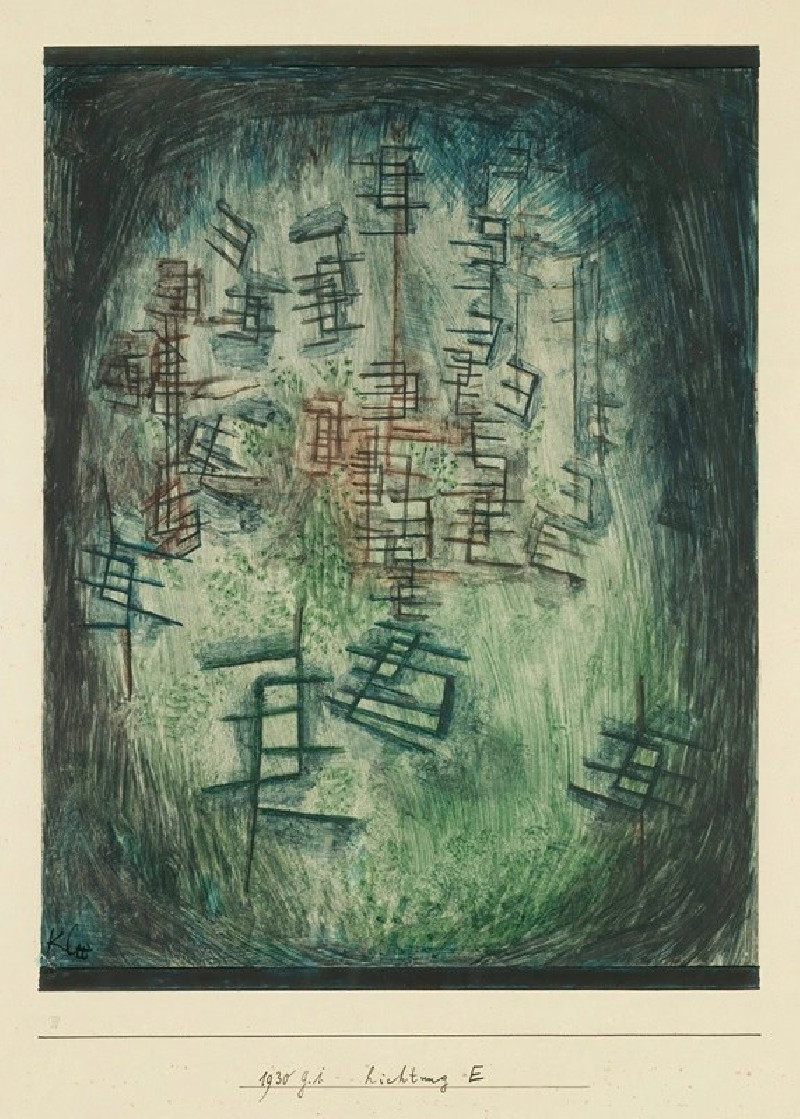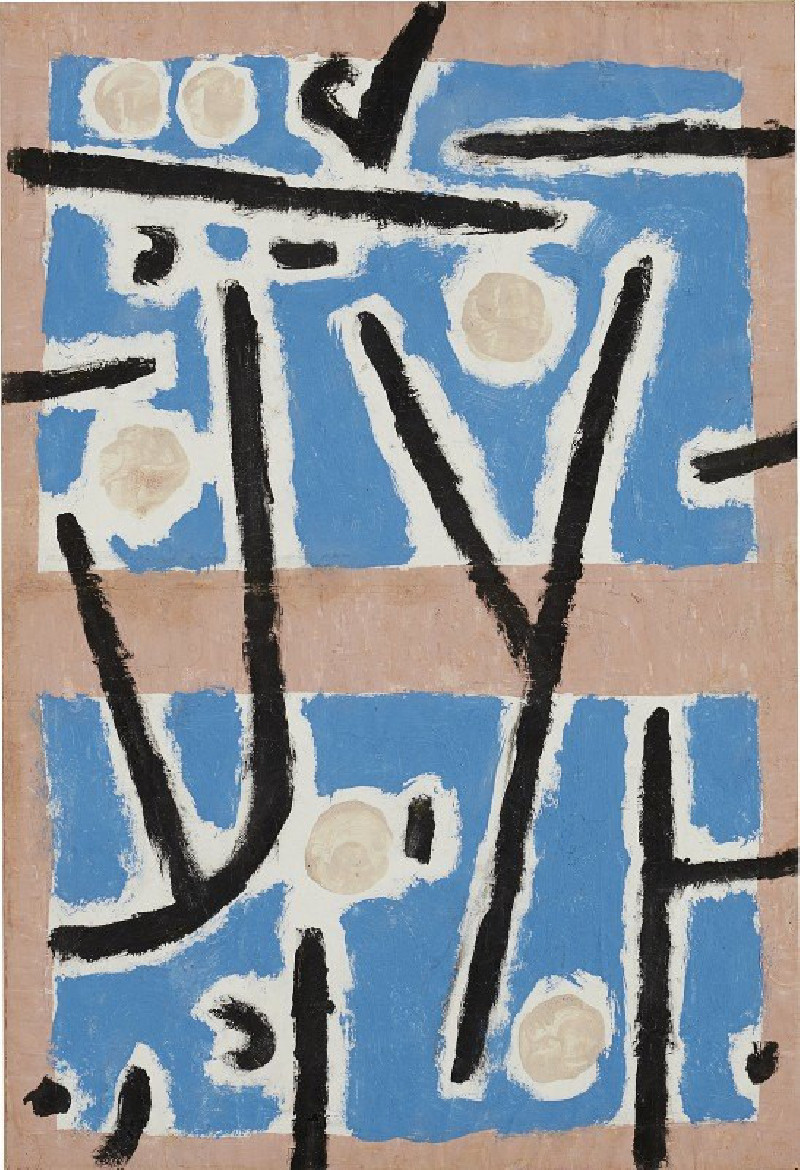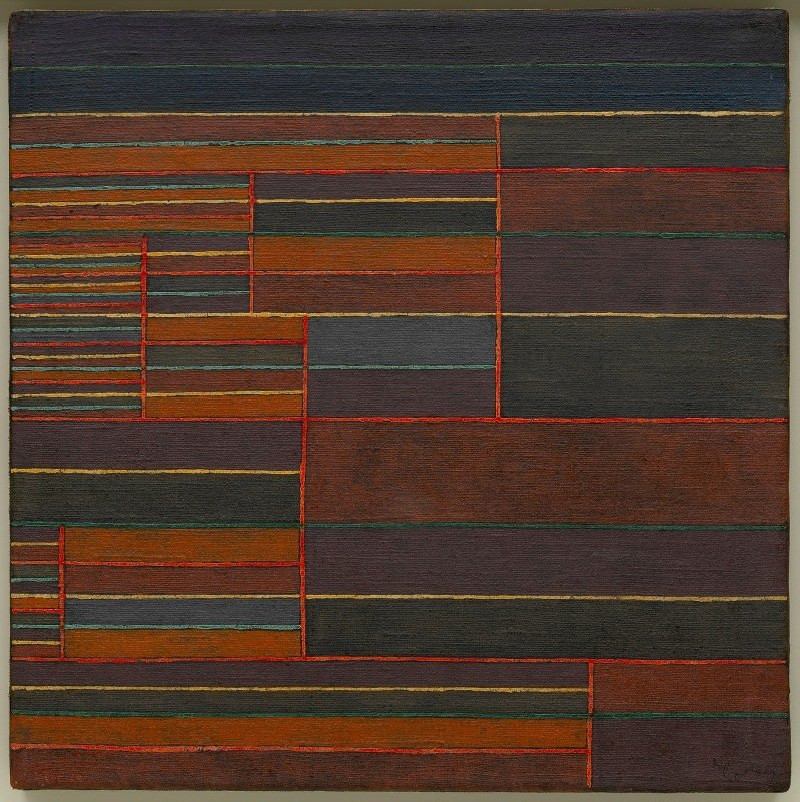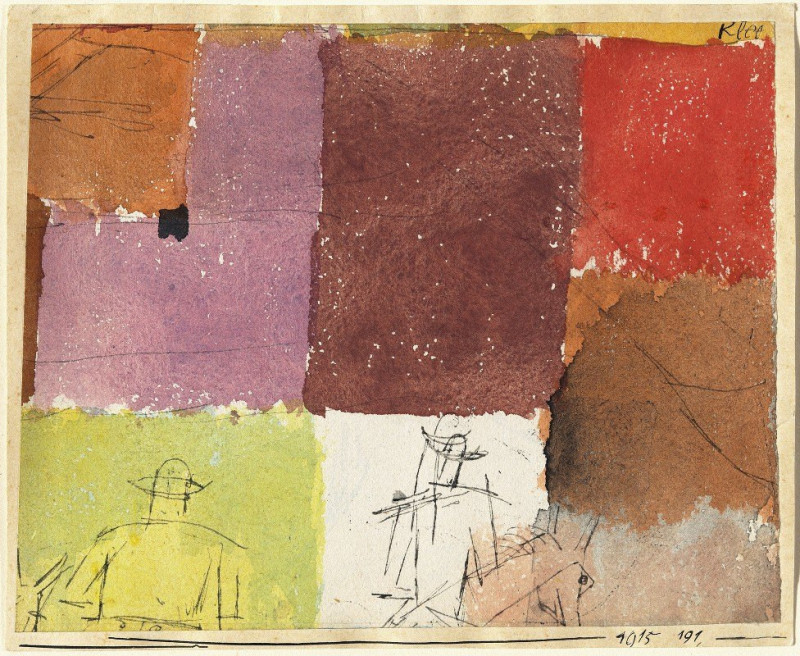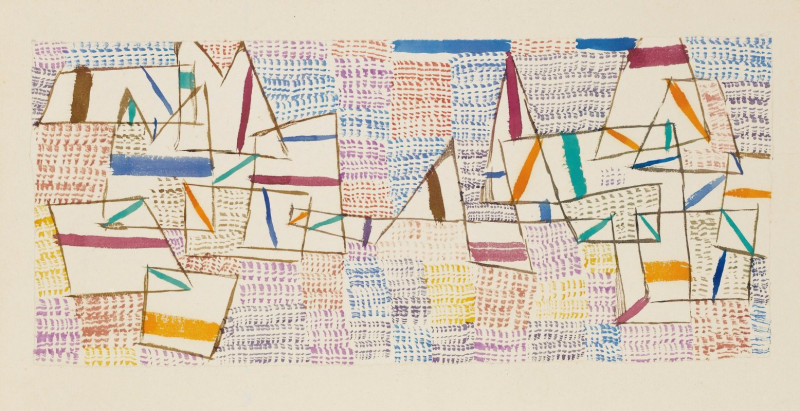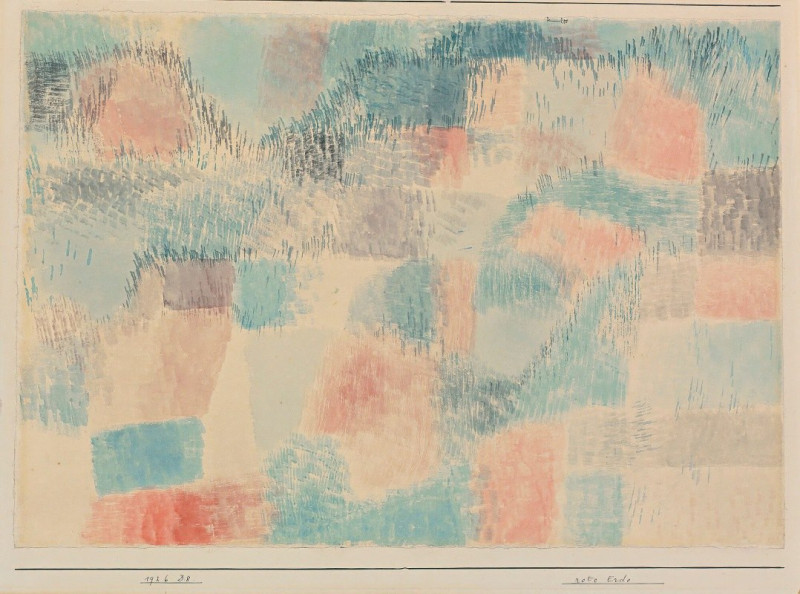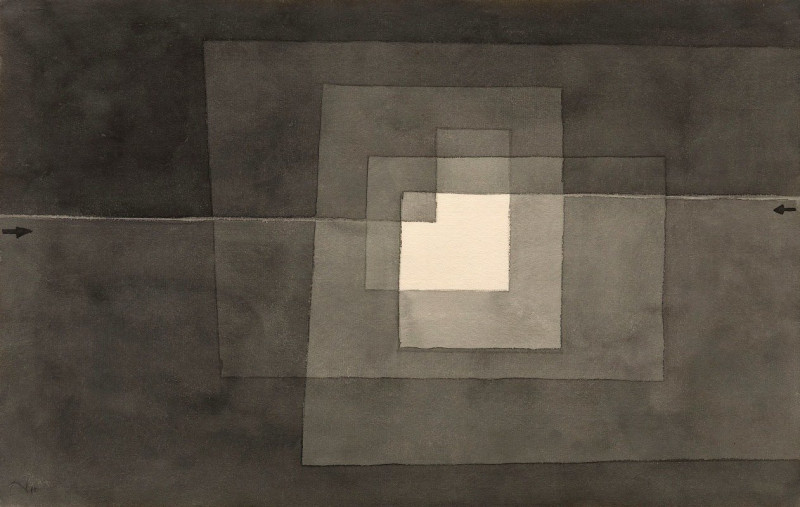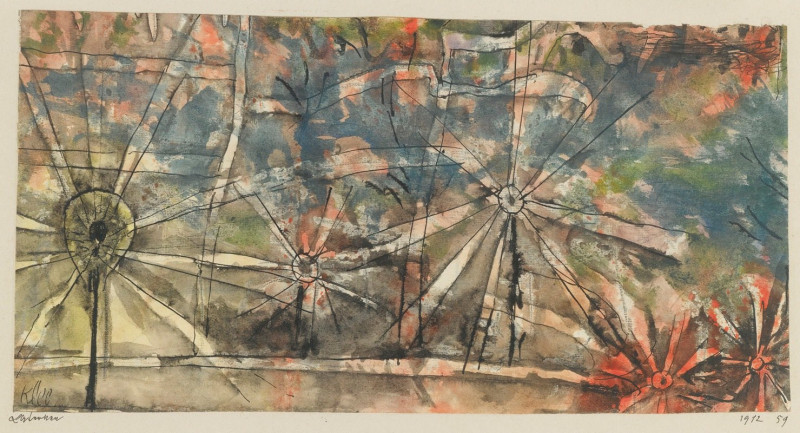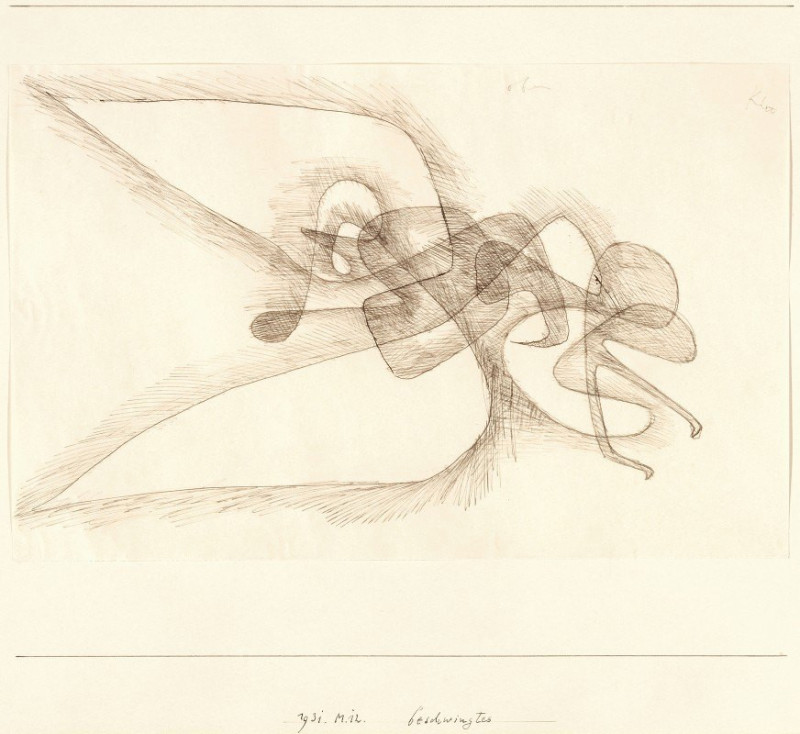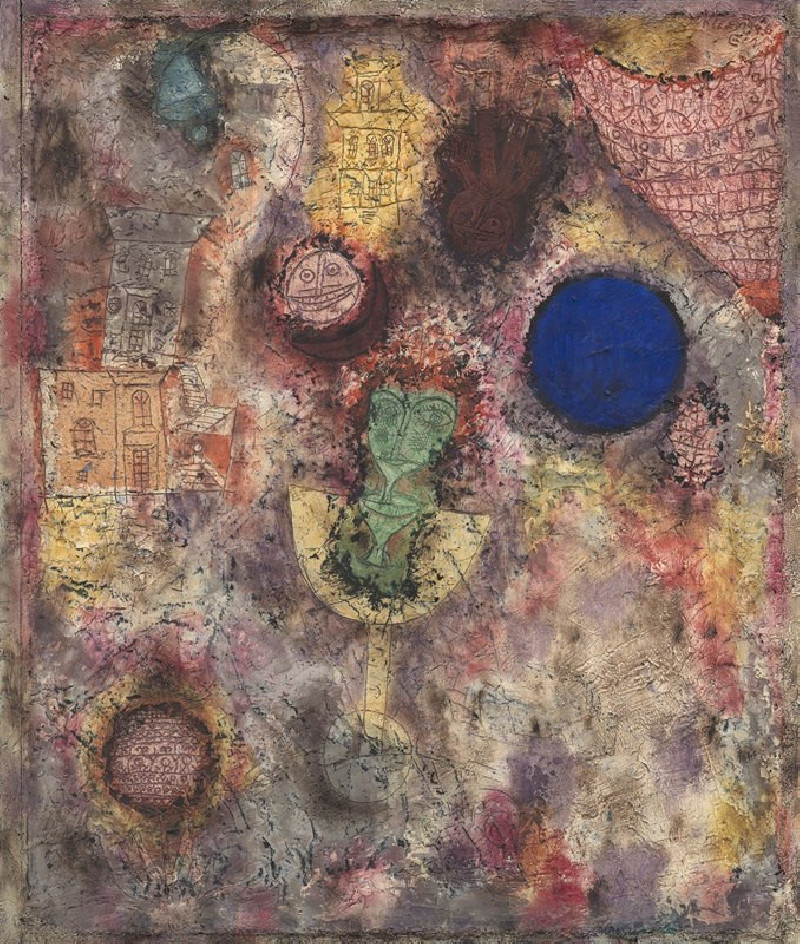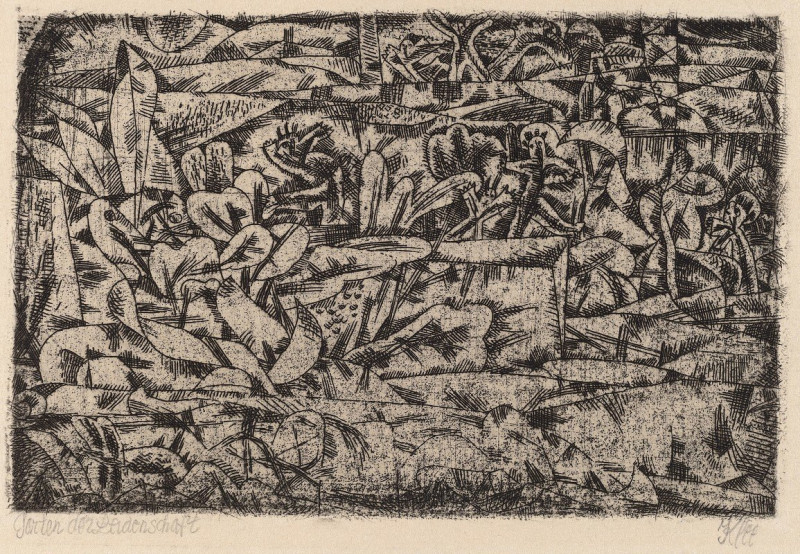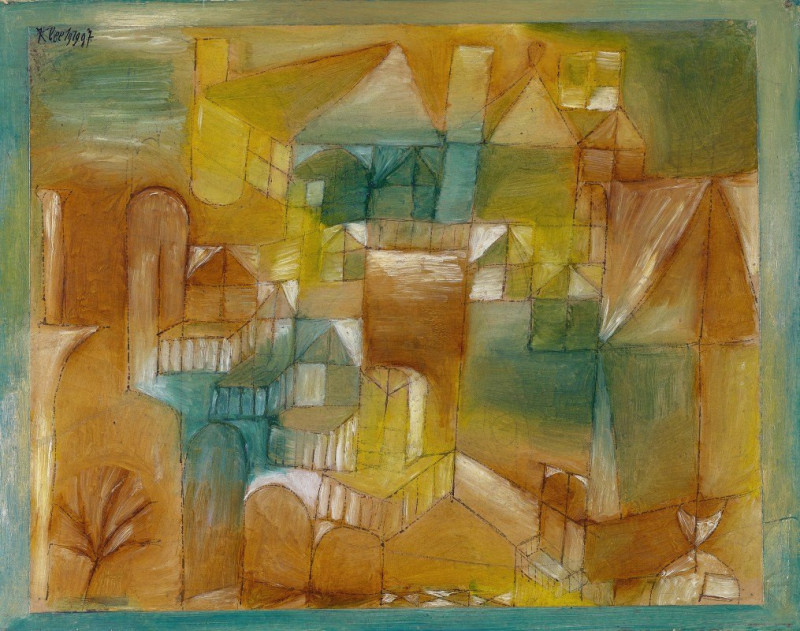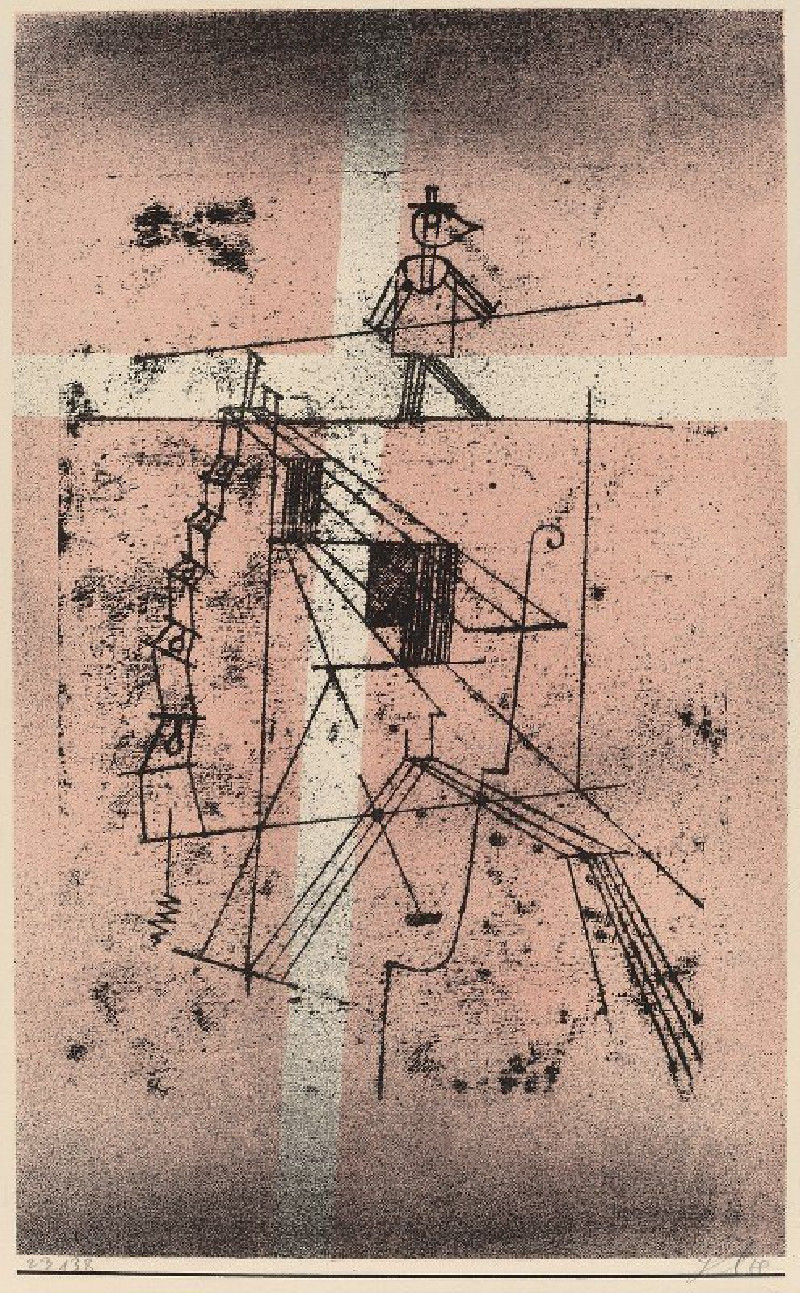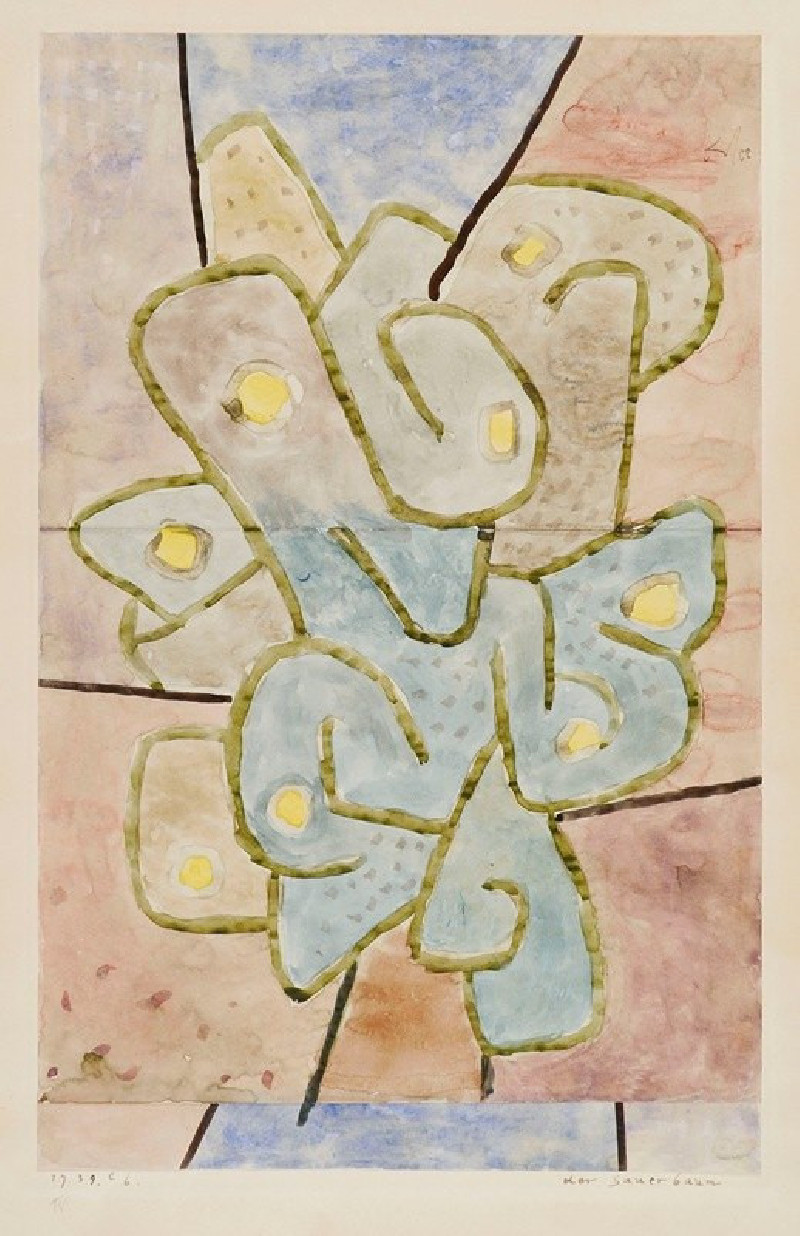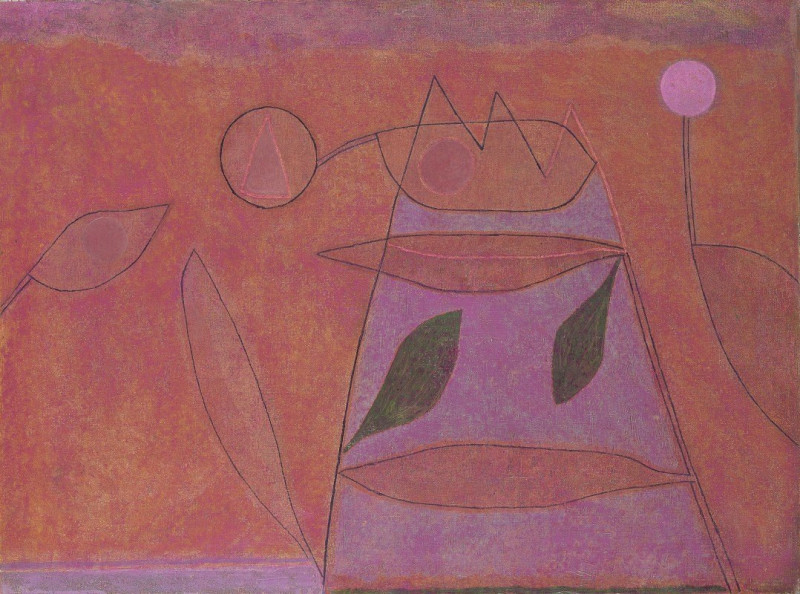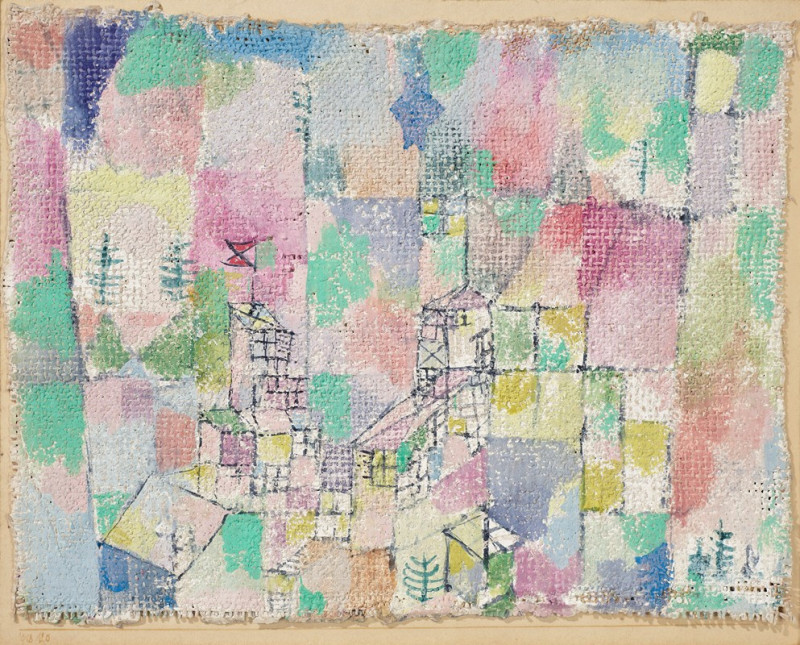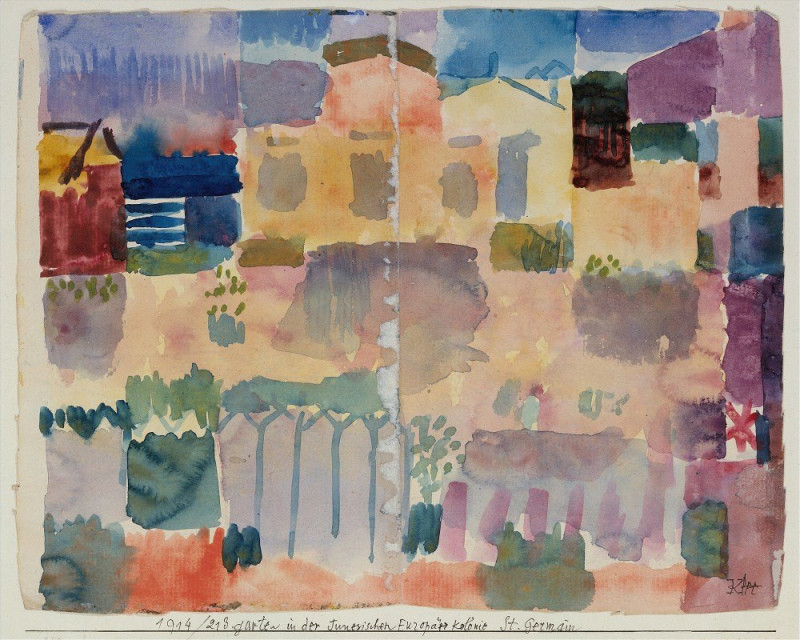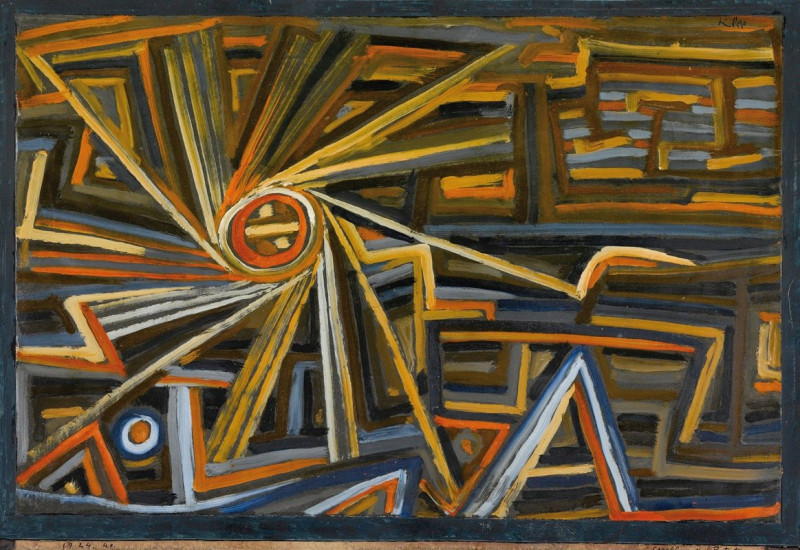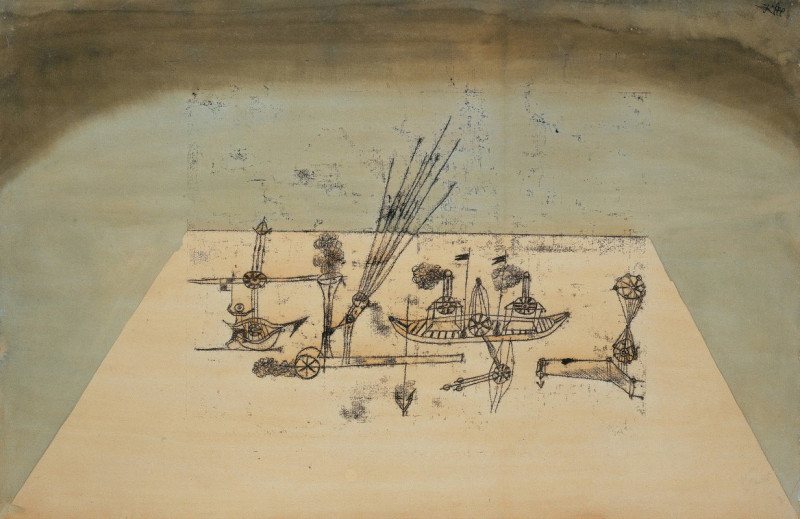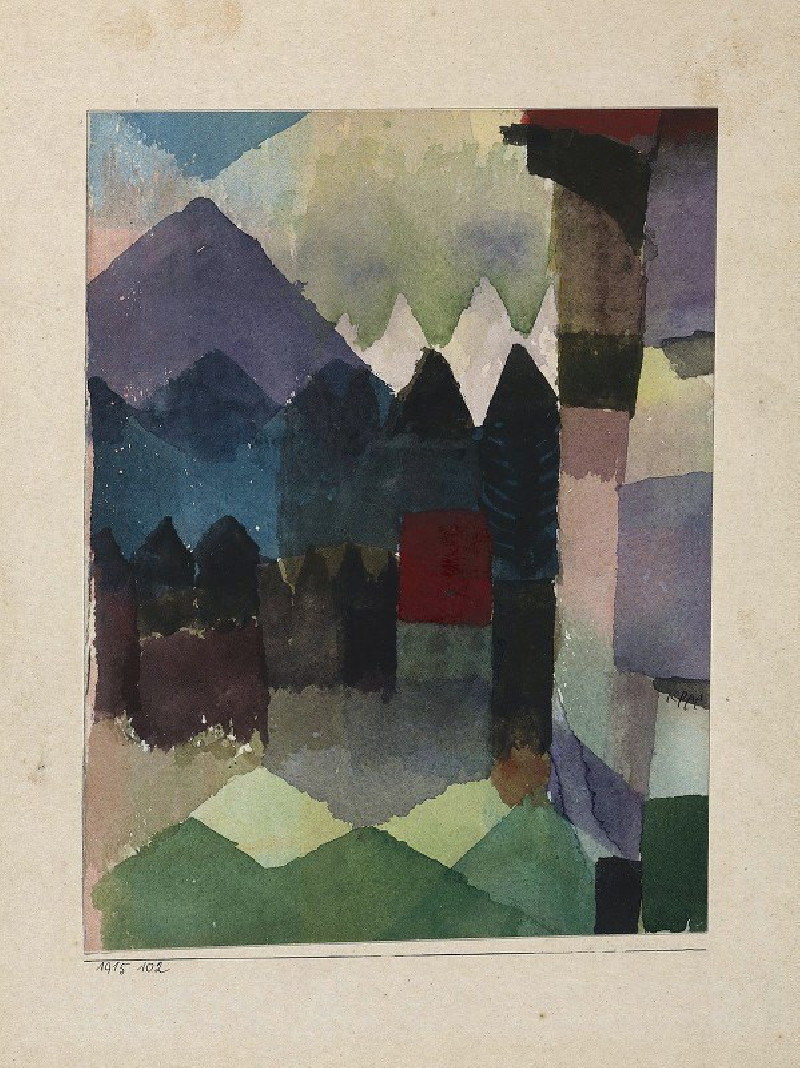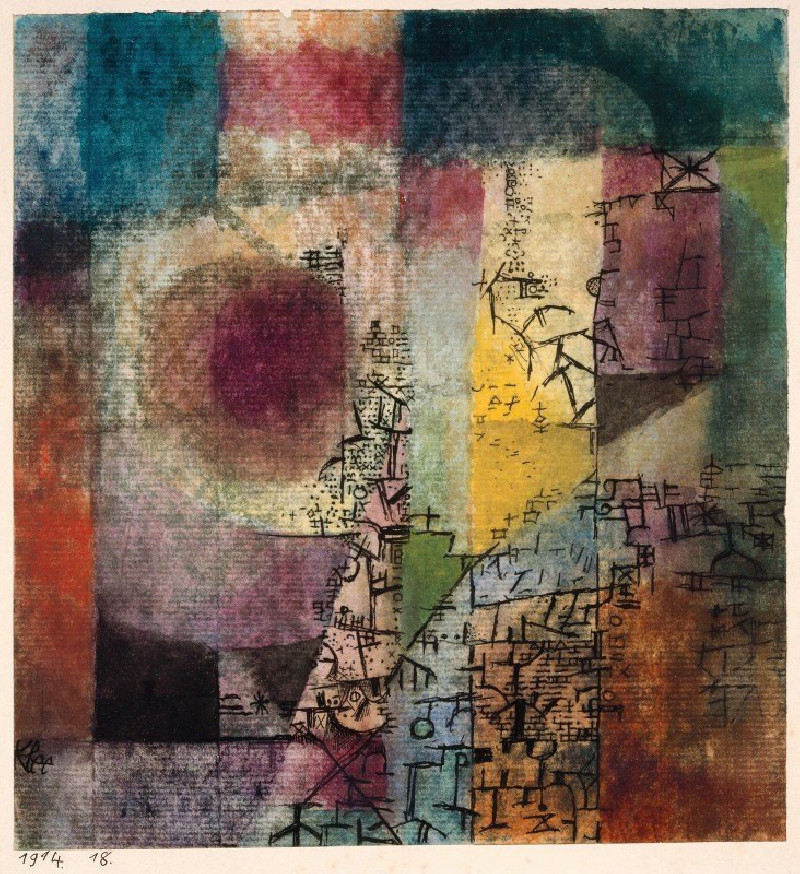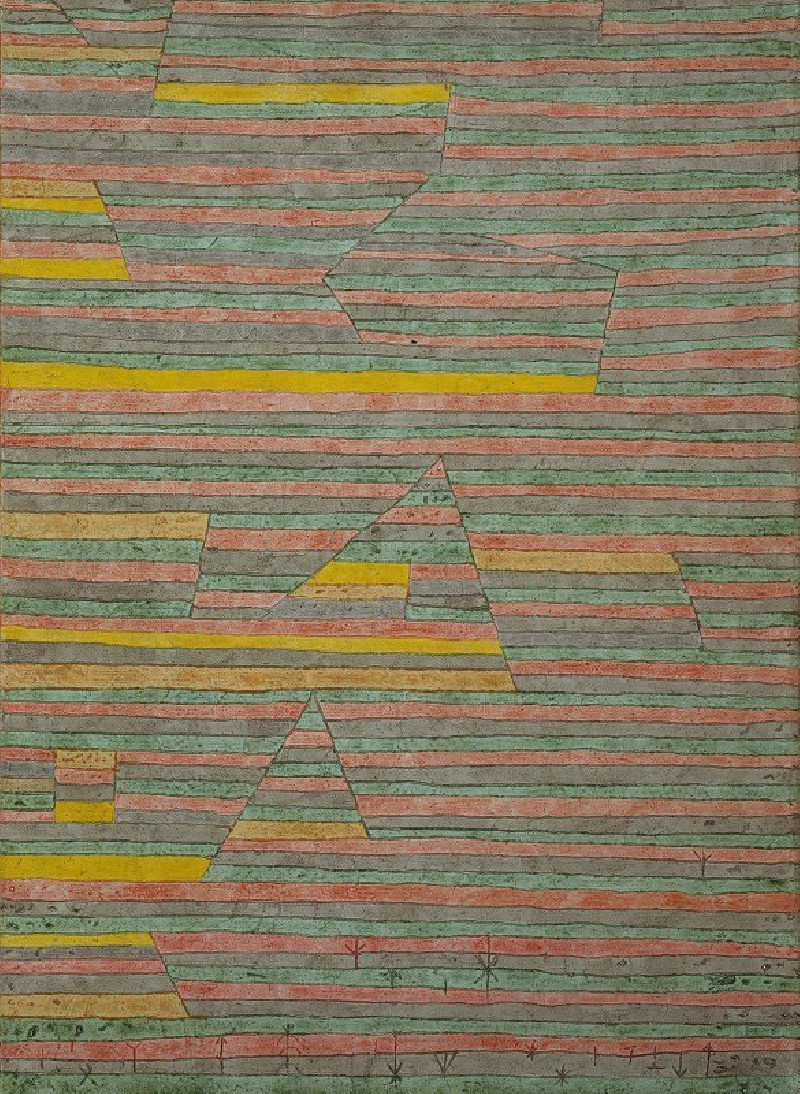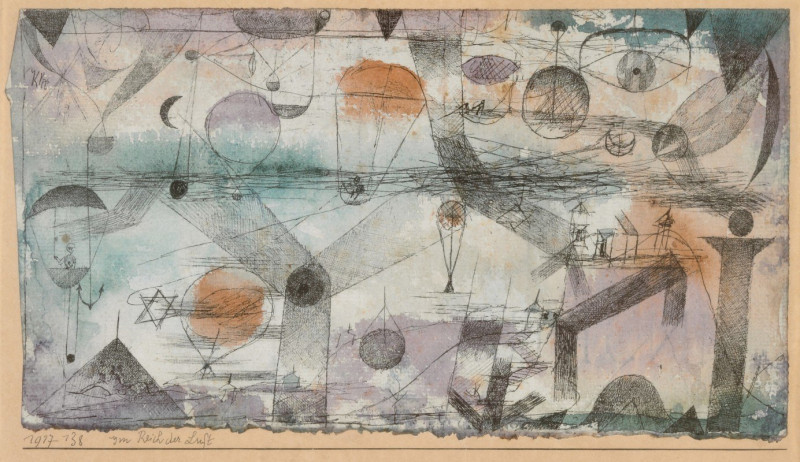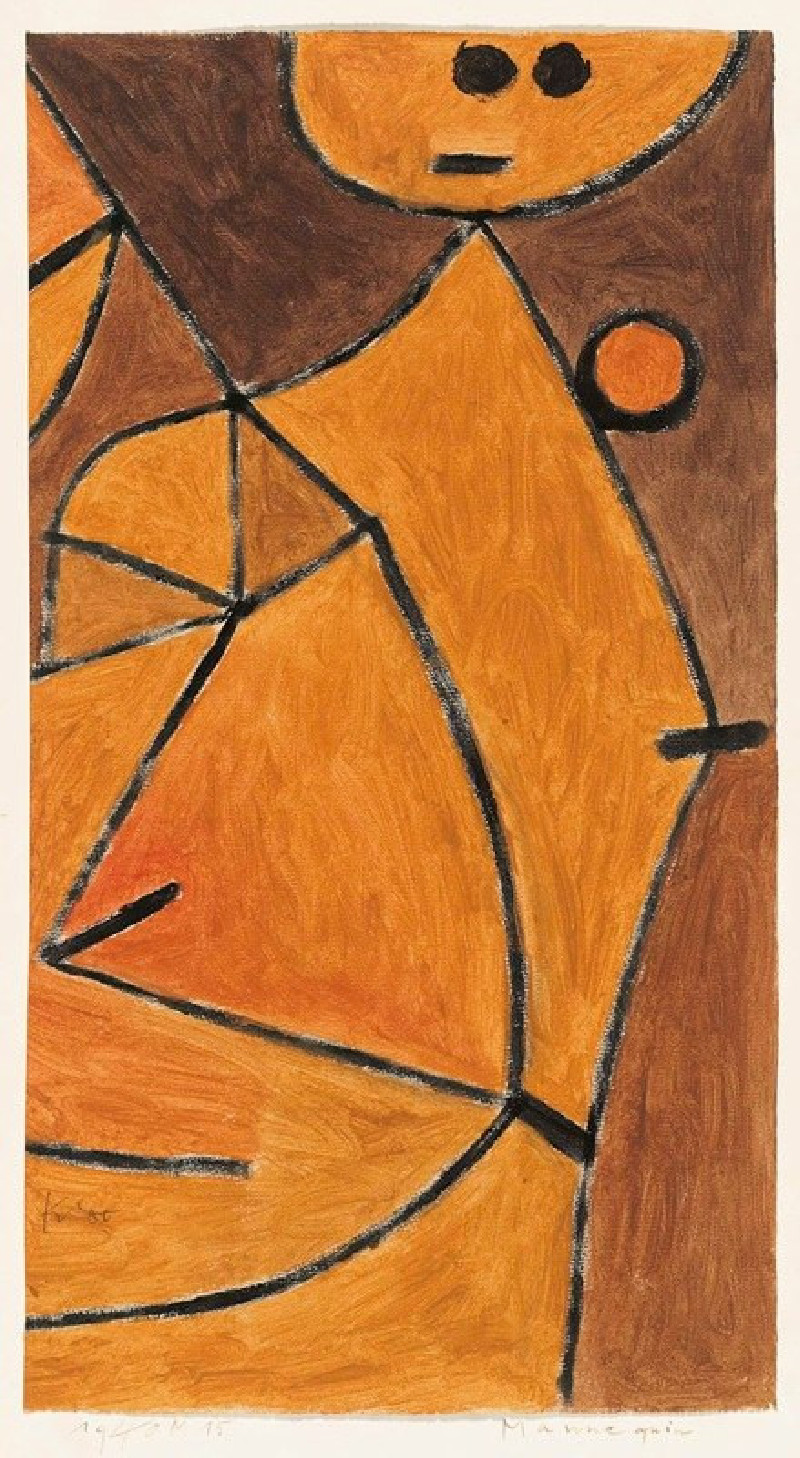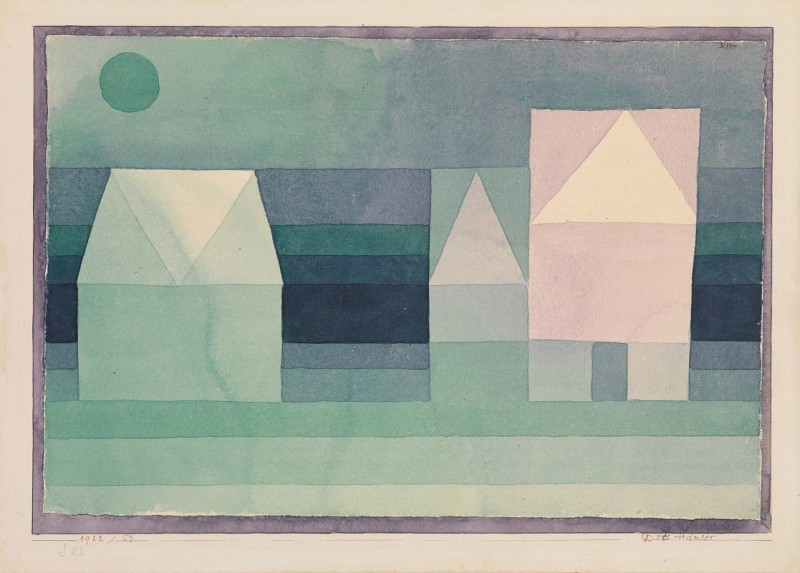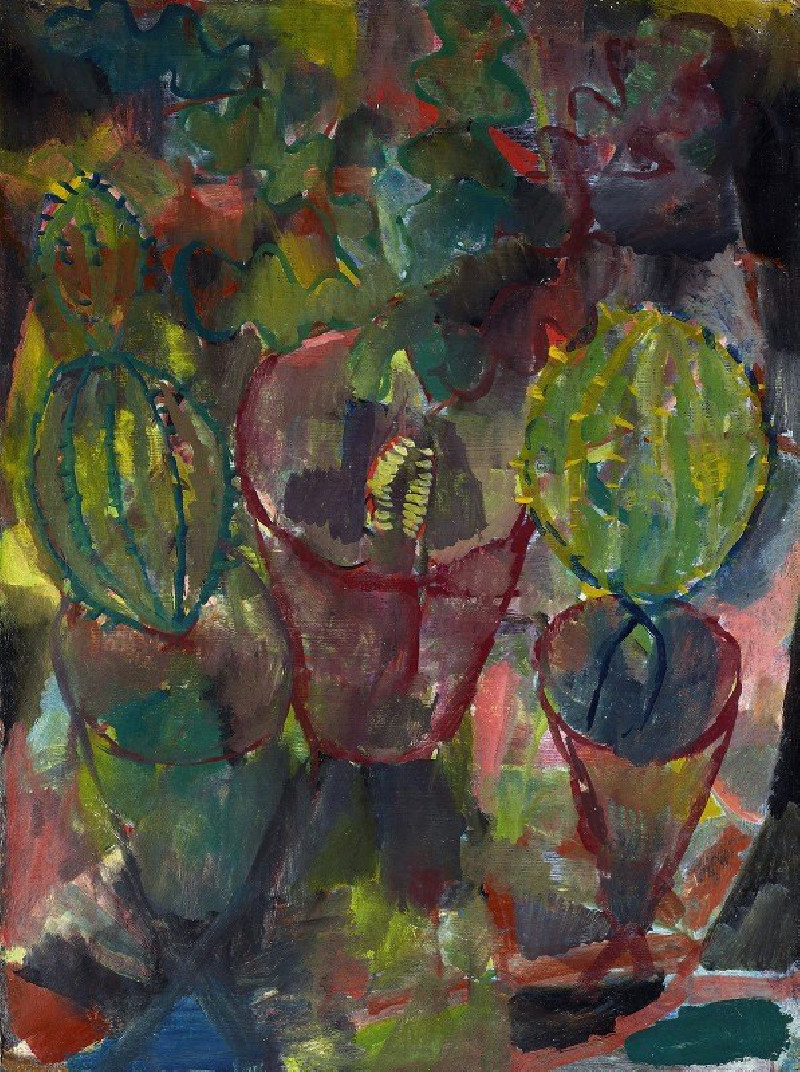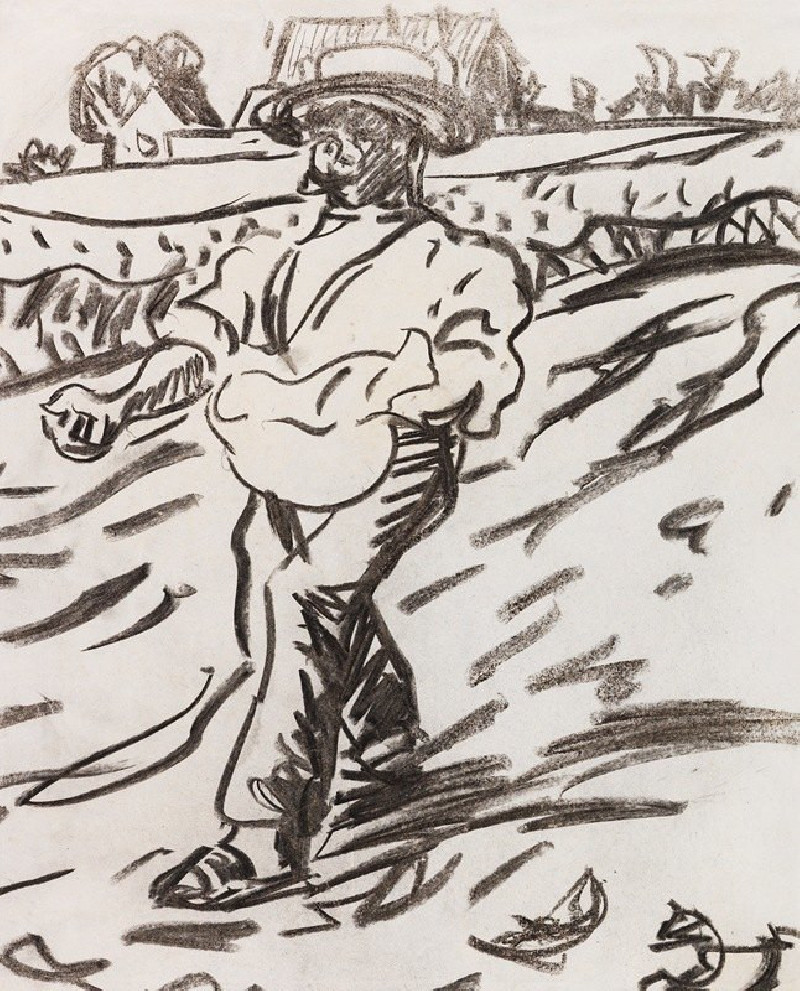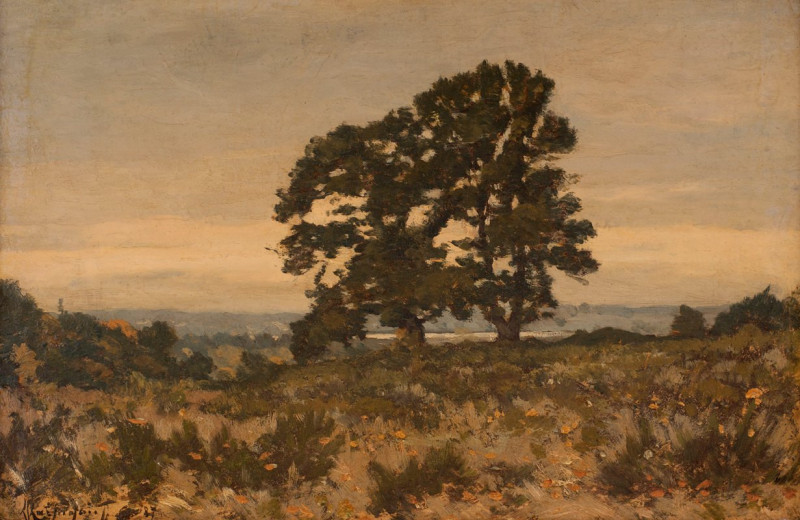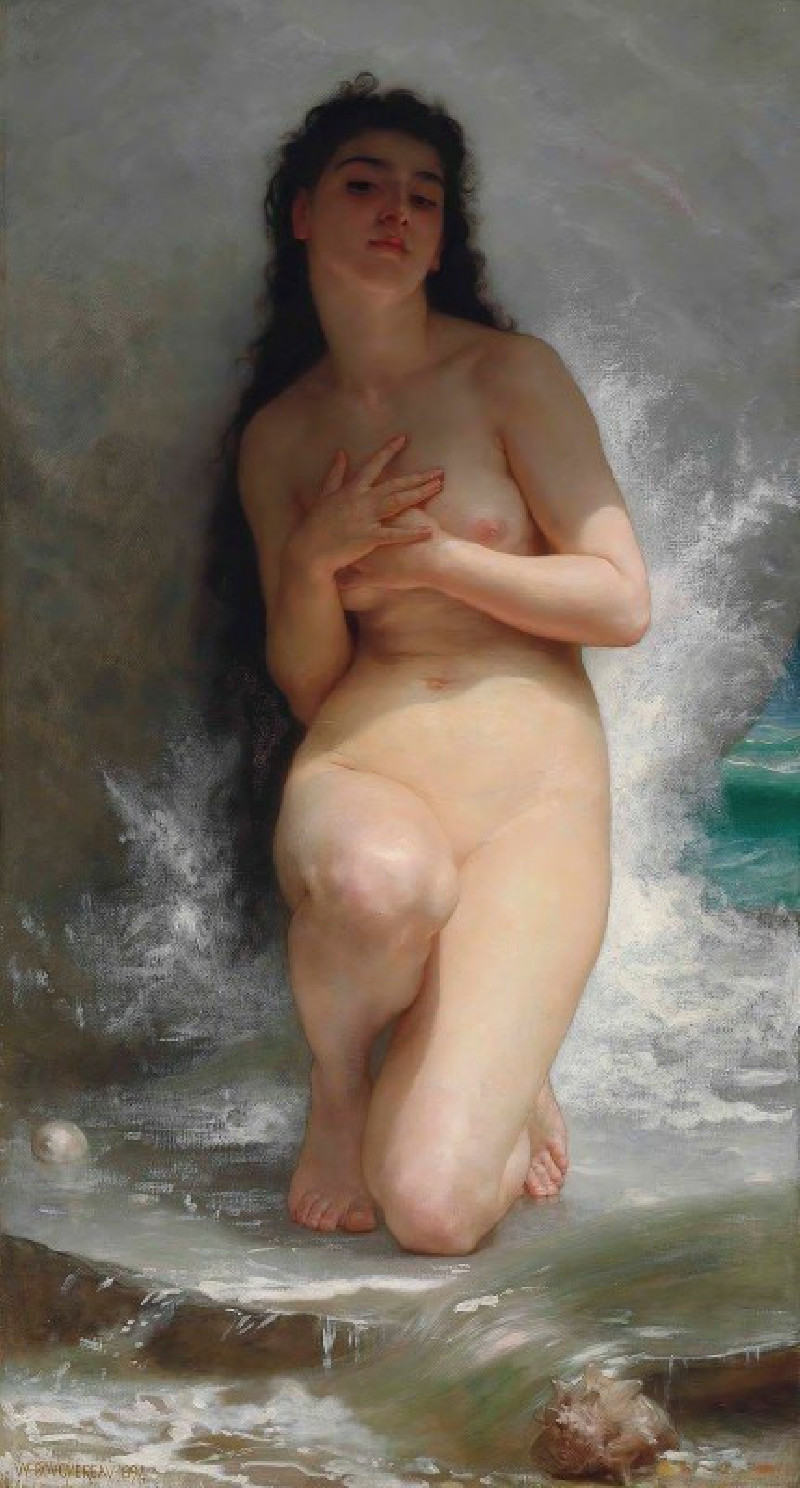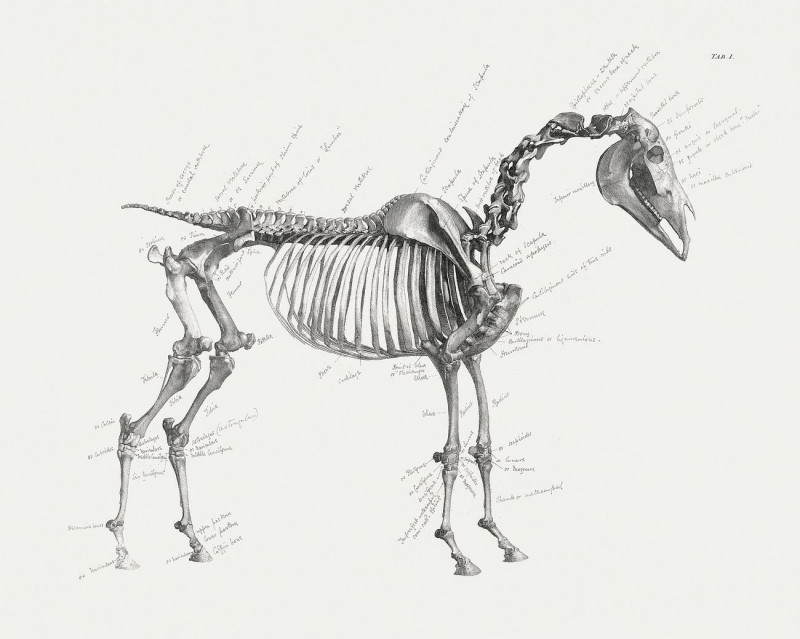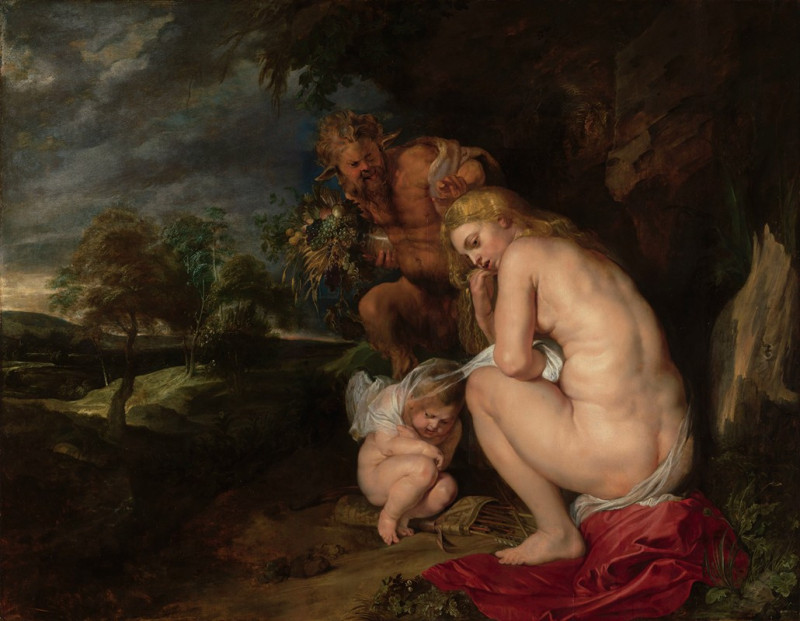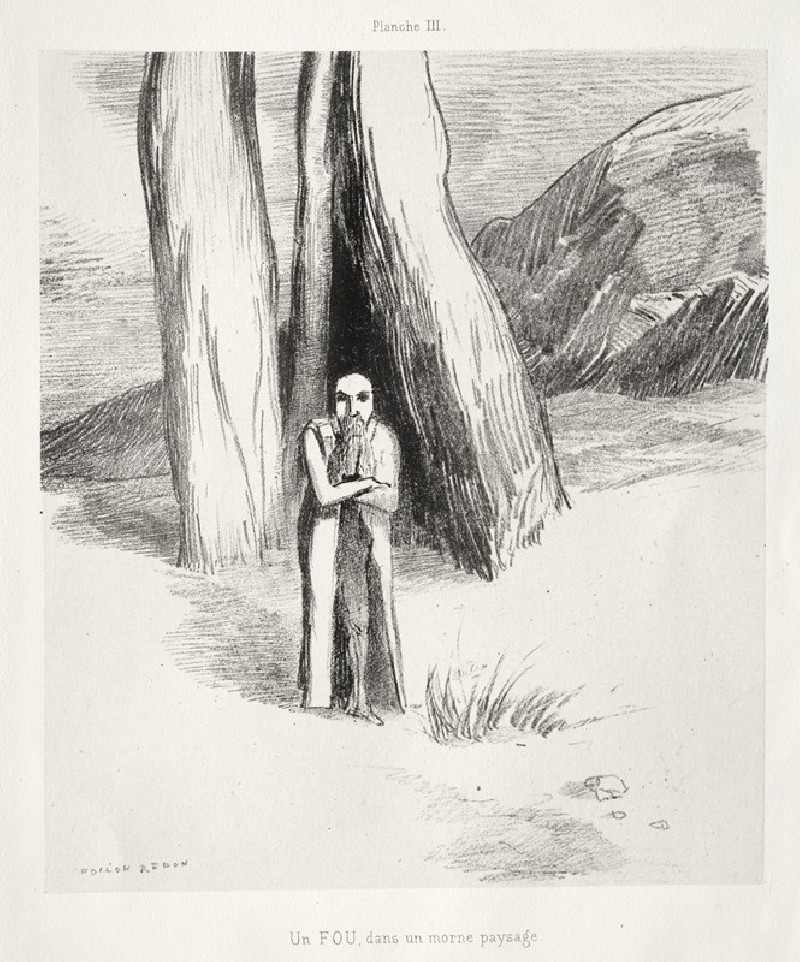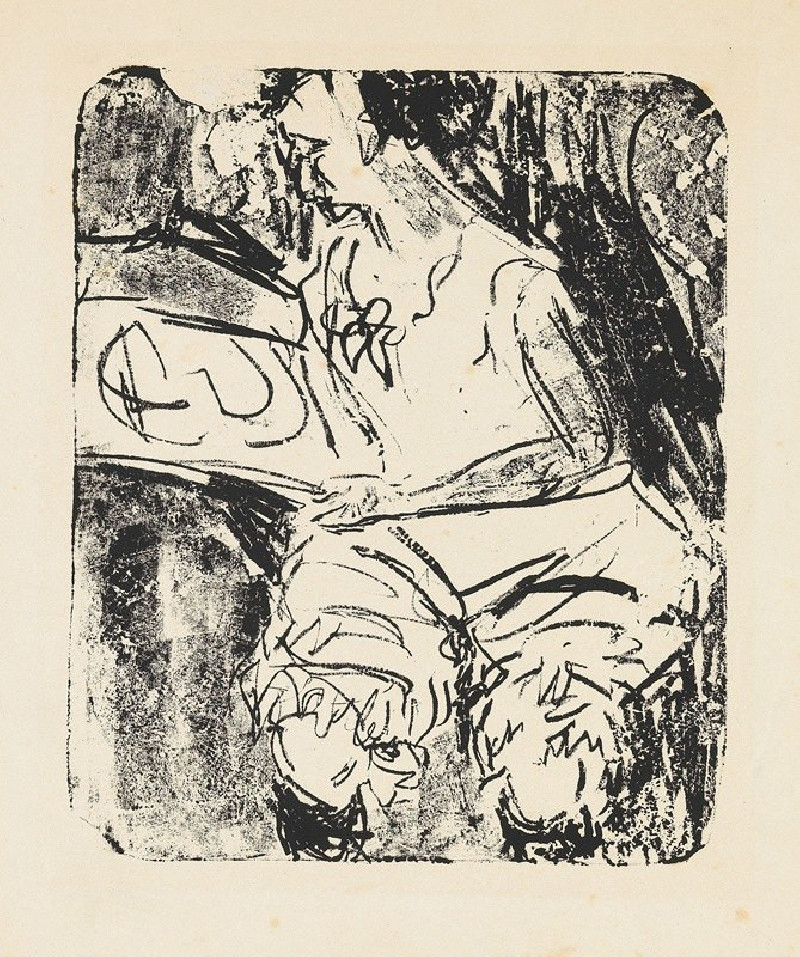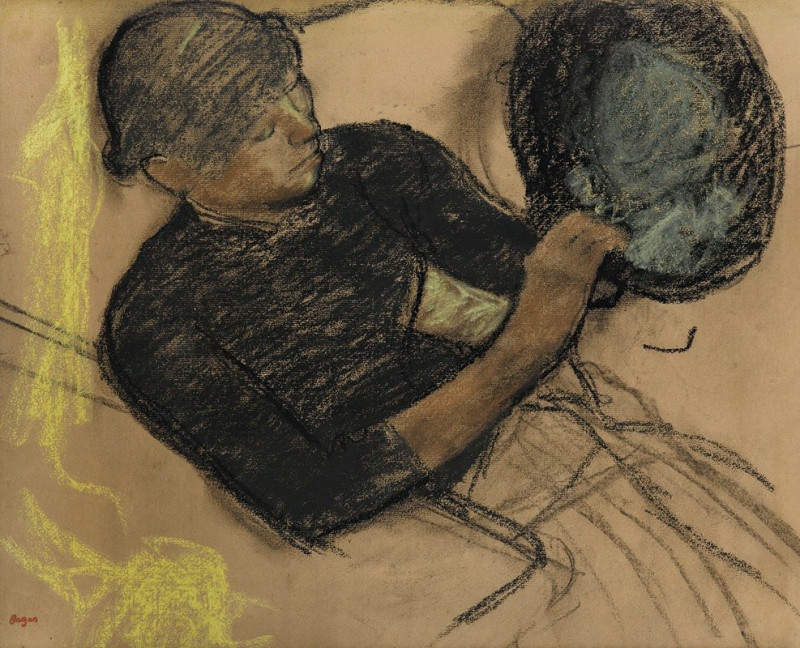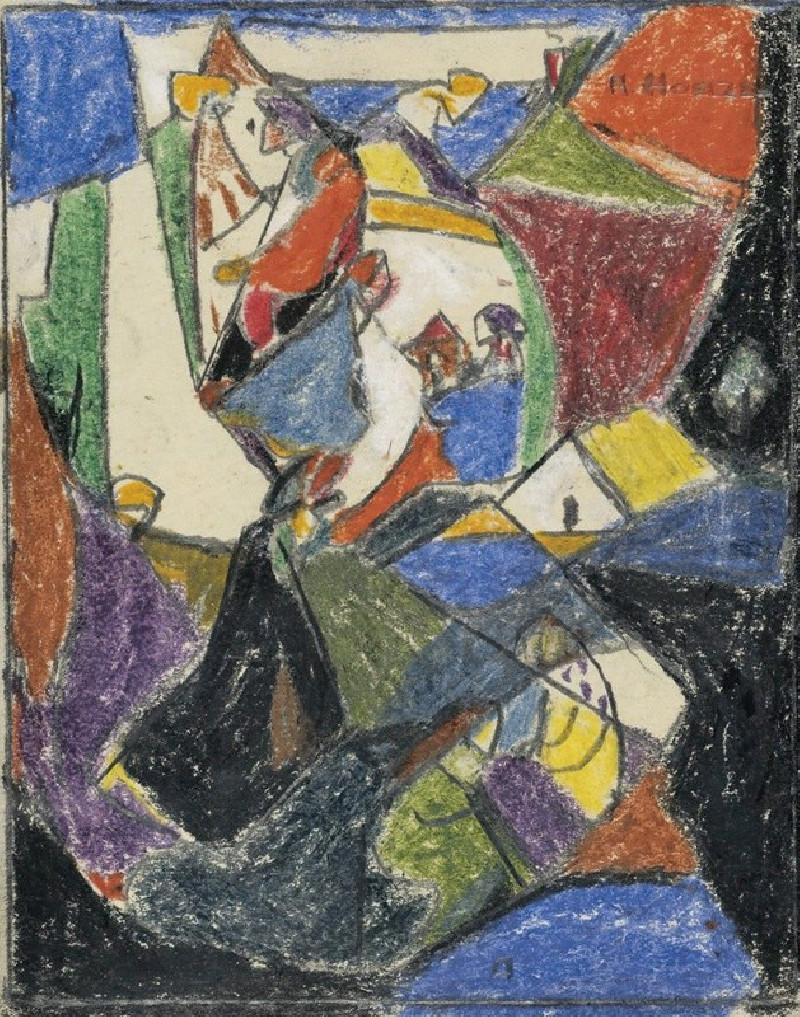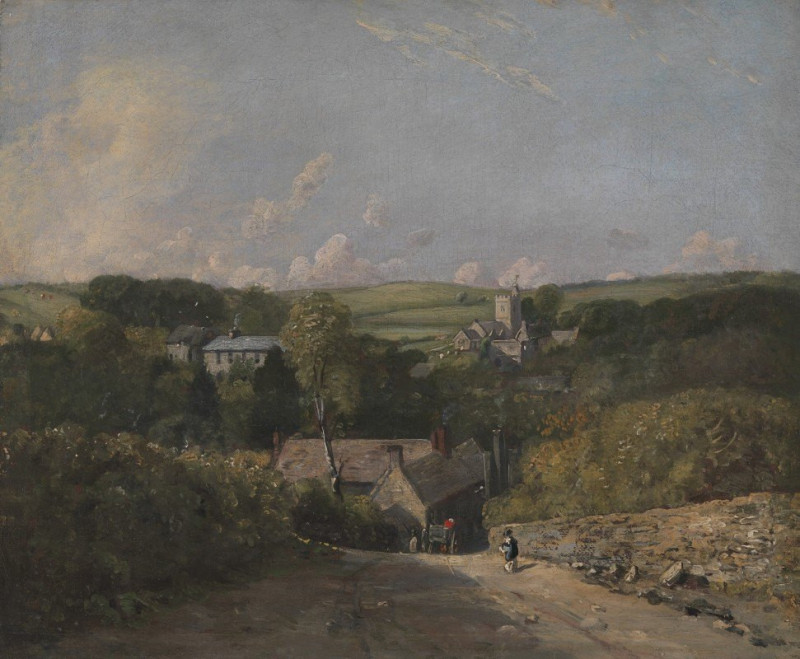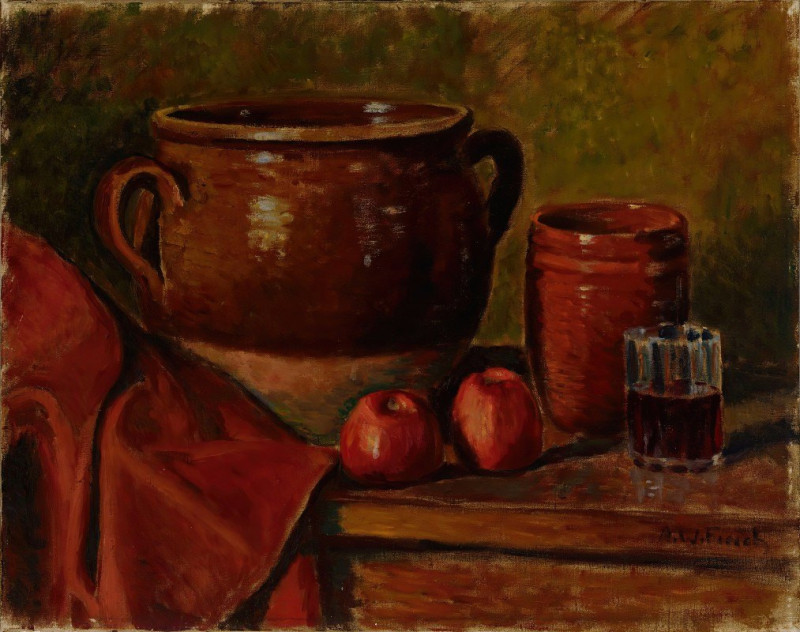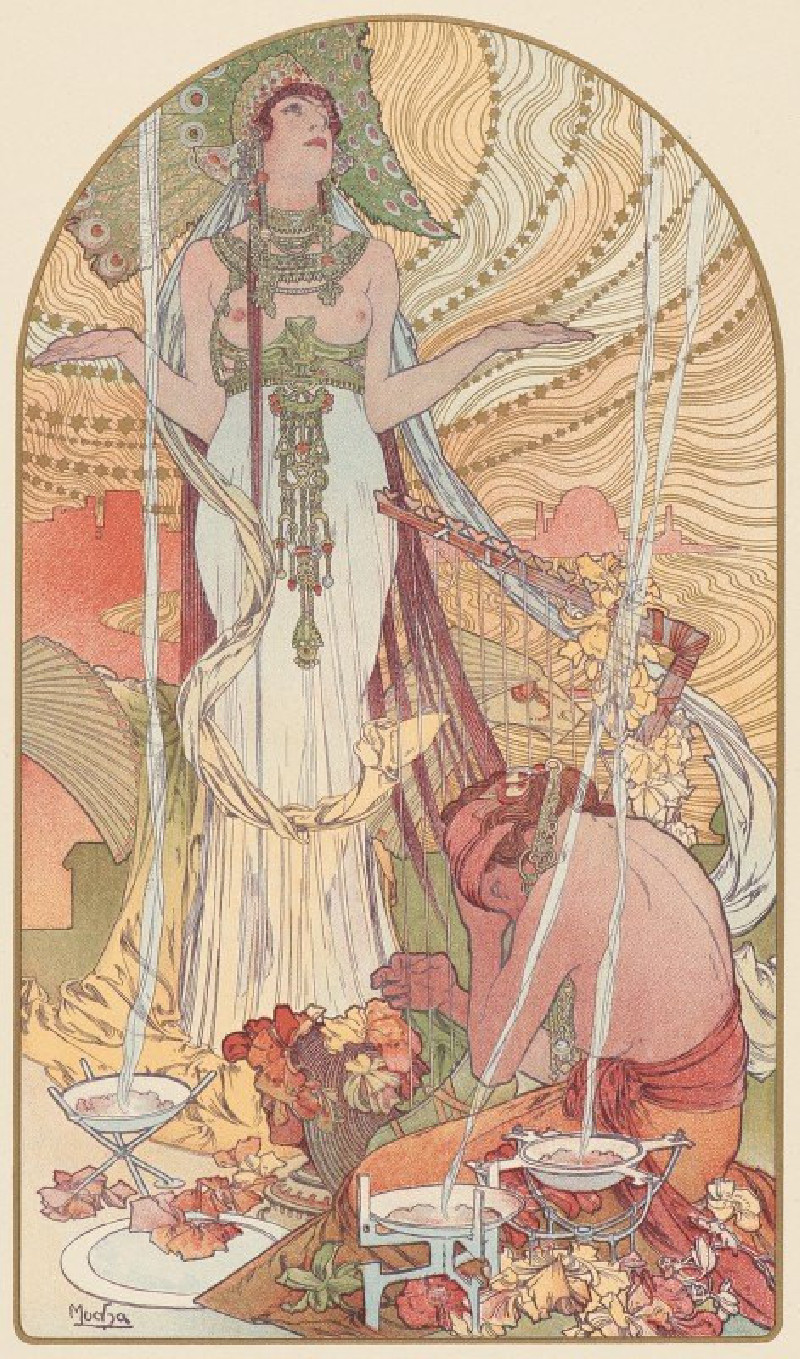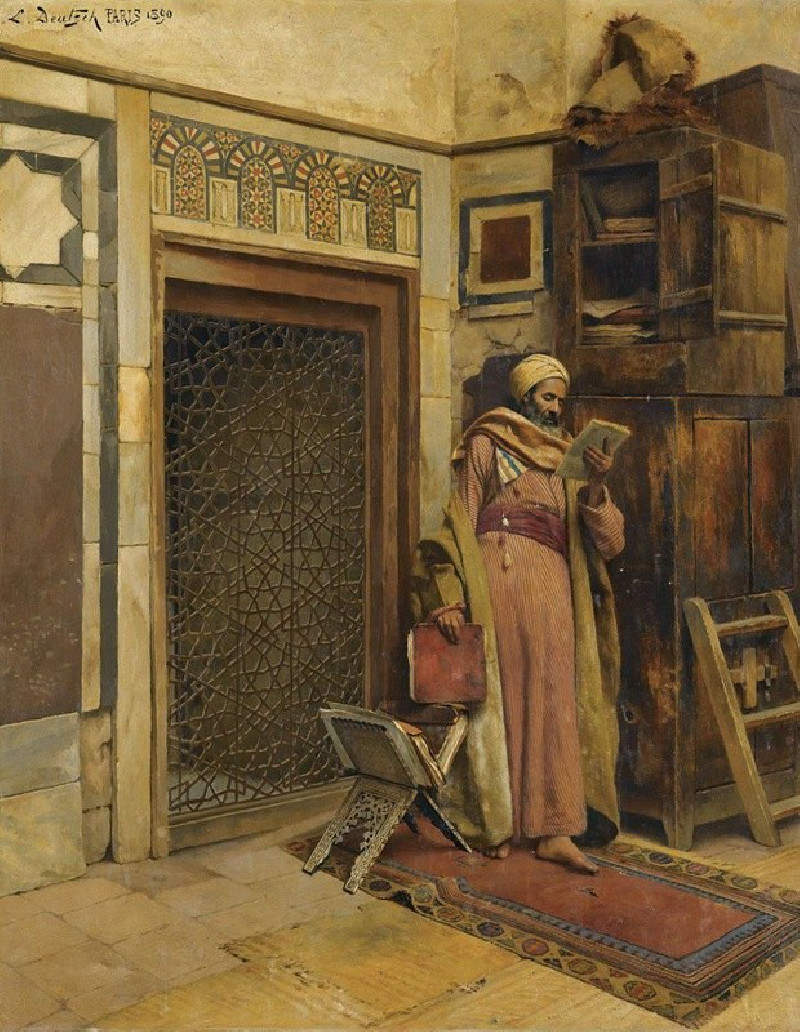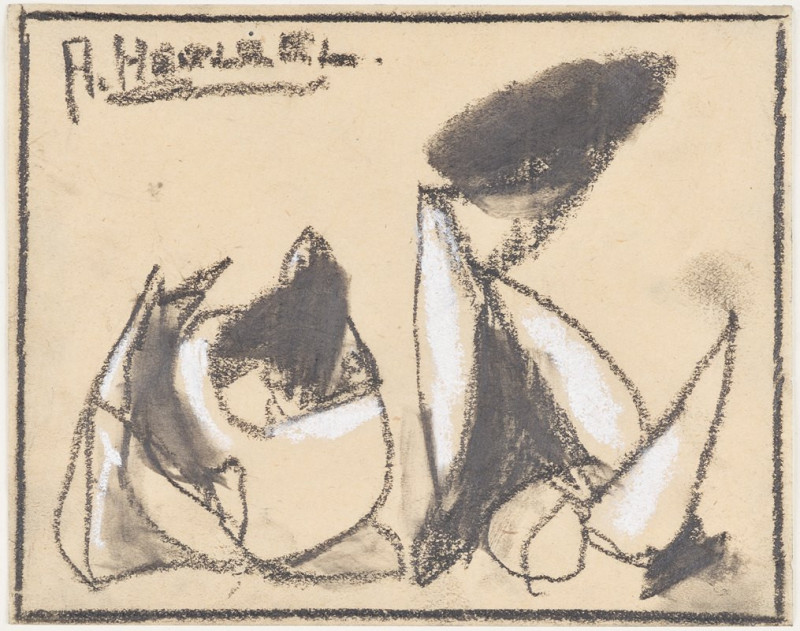Lichtung E (Clearing E) (1930)
Technique: Giclée quality print
Recommended by our customers
More about this artwork
"Lichtung E" (Clearing E), a captivating piece from 1930 by the influential Swiss-German artist Paul Klee, mesmerizes viewers with its abstract and mystical qualities. Marked by its intriguing composition and subtle interplay of color, this artwork invites us into a distinctive, almost otherworldly landscape.In "Lichtung E", Klee employs a complex array of scattered, overlapping forms that suggest the presence of a forest clearing illuminated from within. The use of faded greens and blues against darker outlines simulates the play of light through dense foliage, creating a sense of depth and mystery. Klee's signature abstract style is evident in the geometric shapes and grid-like patterns, which might represent the structural essence of the trees or abstract elements within the clearing.This painting is a fine example of Klee’s exploration of color theory and his ability to evoke emotional resonance through minimalistic yet potent abstract forms. The viewer is drawn into a contemplative space, where the familiar becomes enigmatic, encouraging a personal interpretation and discovery.
Delivery
Returns
Paul Klee was a Swiss-born German artist. His highly individual style was influenced by movements in art that included expressionism, cubism, and surrealism. Klee was a natural draftsman who experimented with and eventually deeply explored color theory, writing about it extensively; his lectures Writings on Form and Design Theory (Schriften zur Form und Gestaltungslehre), published in English as the Paul Klee Notebooks, are held to be as important for modern art as Leonardo da Vinci's A Treatise on Painting for the Renaissance.

